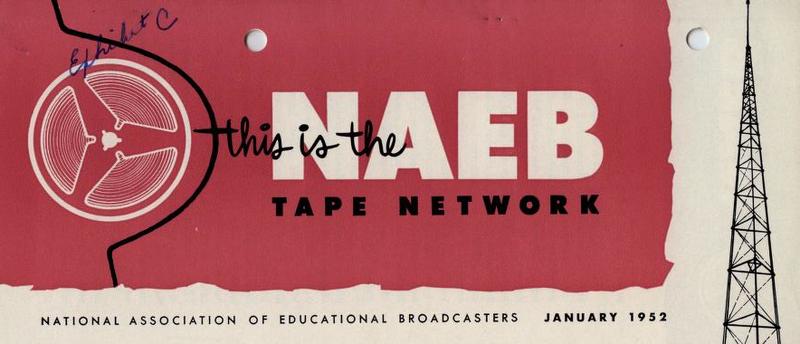The NAEB and Educational Radio Style
Seeds of Discontent was produced by WDET and distributed by the National Educational Radio Network (NERN). Both WDET and the NERN are closely connected to a foundational organization for educational radio in the United States, the National Association of Educational Broadcasters (NAEB). Wayne State University’s WDET was a member station, and the NERN, previously called the NAEB Tape Network, was created to share notable and effective radio programs produced by member stations across the country.
Through the series it selected and produced in the 1950s, the NAEB established a set of norms for educational radio. The hundreds of series distributed by the NAEB and broadcast by educational radio stations in the 1950s feature a variety of aesthetic approaches, with the acceptance committee discussing its concern over programs that only presented monotonous lectures. While some series vary aesthetic strategies across or within episodes, most series can be broadly characterized as fitting into one of five primary production approaches, with distinct aesthetic strategies: music, lecture, panel, documentary, or drama. A series might combine or alternate between some of the five options outlined here, but the vast majority of NAEB series generally fit into one of these categories, with the music, lecture, and panel categories as the most common in the period. Music programs foreground performances of contemporary or classical musical compositions, often accompanied by commentary from experts or composers. The lecture category focuses on speeches by a single orator, and panels comprise conversations between a host and guest or group of guests. Lectures were often recorded from in-person speaking events, rather than created in-studio for broadcasting purposes. While the lecture category reinforces some of the negative assumptions about educational radio, with single voices speaking for the length of a program, the voices can, of course, contain variety. Like lectures, panel series generally focused on a single, limited topic within each episode, but they included more voices discussing ideas and issues.
The music, lecture, and panel categories are most closely associated with this period of educational broadcasting and appear throughout the NAEB audio archive, but the documentary and drama categories facilitate substantial aesthetic variety, contradicting the characterization of a droning lecturer as the sole voice of educational radio. In documentary programs, producers sometimes record environments, conversations, and commentary outside of the studio, with music incorporated more frequently than lectures or panels. This strategy of mixing narration and clips from other speakers, which are sometimes presented as independent monologues and sometimes as interviews with the narrator, is common in educational radio documentaries, with environmental noise (real or studio-produced), sound effects, or music filling out the soundscape in some series. Scripted dramas regularly include actors, music, and sound effects, with many series focusing on historical events. In this way, dramas illustrate educational stations borrowing strategies from the large commercial broadcasters, with their popular drama genres like the thrillers and crime shows.
